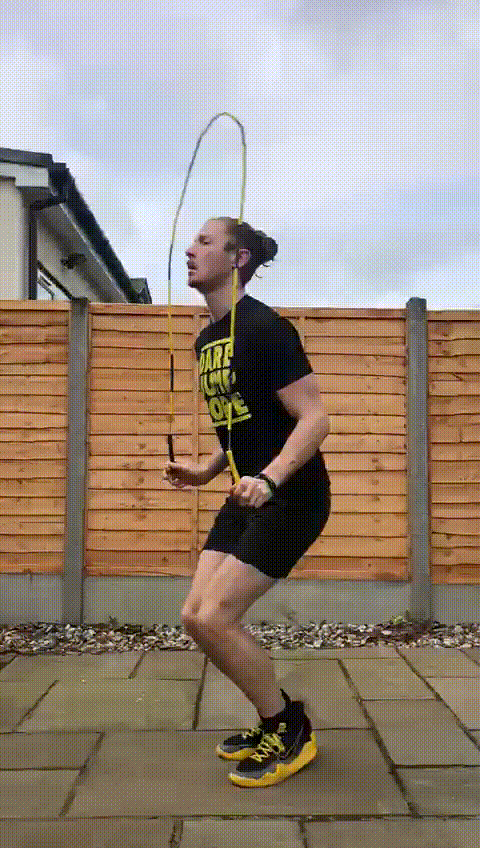How do I improve my double unders?
Whether you’re into crossfit, boxing or competitive freestyle, everyone wants to learn and master the same one skill; the double under. This is the famous one, the one everyone knows. They’re used as a metric for some athletes and they’re used as cross-training tool for others. And they’re the one of the most sought-after skills by beginners once they’ve got the basics down.
Been Living Under a Rock?
For anyone who’s in the 1 percentile that don’t know what a double under is, a double under (sometimes called a ‘dub’) is a jump rope freestyle skill where the jumper gets the rope under them twice in a single bound.
“How Do You Do a Double Under?”
“So how do you do a double under?” I get this question daily as a jump rope coach. And this skill can be dissected into so many smaller pieces like a molecule into atoms. Many many coaches, including myself and RX Smart Gear, can spend countless hours breaking this skill down for athletes. Let’s take a step back though, and look the five key things to remember whether you’re trying to land your first double under or smash your first hundred.
1 Don't Dolphin Kick
It’s extremely common for beginners to build a habit of kipping their legs forward and hyper-extending their knees to prevent them tripping the rope mid-double under. Not only will this kill your upward momentum and stop you from getting high enough to get the rope under twice, but it’s very dangerous for the health of your hamstrings. Bound up straight with only a slight bend in your knees. Imagine you’re a rocket taking off, send all your energy up.
2 Keep Your Hands Close
To help you get the lift, you need to keep your hands in close to your hips and drive your wrists down towards the floor driving from your elbows (not your shoulders) to force the rope under. As Einstein said, every action has an equal and opposite reaction - use the downward force in your arms to help propel you upward.
3 Shorten Your Rope
Most people use a rope that is way too long for them. This changes everything about your posture, your hand position and the aerodynamics of the rope. Double unders don’t require anywhere near as much energy as people think; the reason people get this impression is from watching others struggling to do double unders with a rope that’s too long for them. A lot of people initially trip using a shorter rope, and use this as a excuse to reason that the rope is too short. What they miss is that the fact they’re tripping highlights something that’s holding them back in their hand position. Correct isn’t always comfortable, and comfortable isn’t always correct.
4 Go Slower
Contrary to popular belief, you don't want to go at full speed when you’re doing double unders. This will allow your form to diminish as you quickly fatigue. Bounding as high as you can gives you the most air time to complete the double under, as well more time to anticipate the next rep. Going slower also gives you more control over the rope throughout the movement; think of it this way, its harder to control the steering on a car when speeding down a motorway than parking in a car park. Go slower and bound as high as you can to make the double under easier.
5 Adjust Your Rhythm
A double under tempo isn't just a double-time of single unders. The first rep is much faster and more immediate than the second; the second rep is slightly delayed and off-beat happening while you hang in the air at the peak of your bound. This is why some people struggle to practice double unders to music since most popular music doesn’t have this sway in the rhythm.
Discipline is Freedom
Whilst training my clients, I see so many excuses for why people doubt themselves. But after a little discipline, they are all set free and succeed. I’ve seen six-year old clients and sixty-year old clients land their first double unders because of these key pointers. And I know you will too! Need any more advice? Get in touch or book a coaching session.





